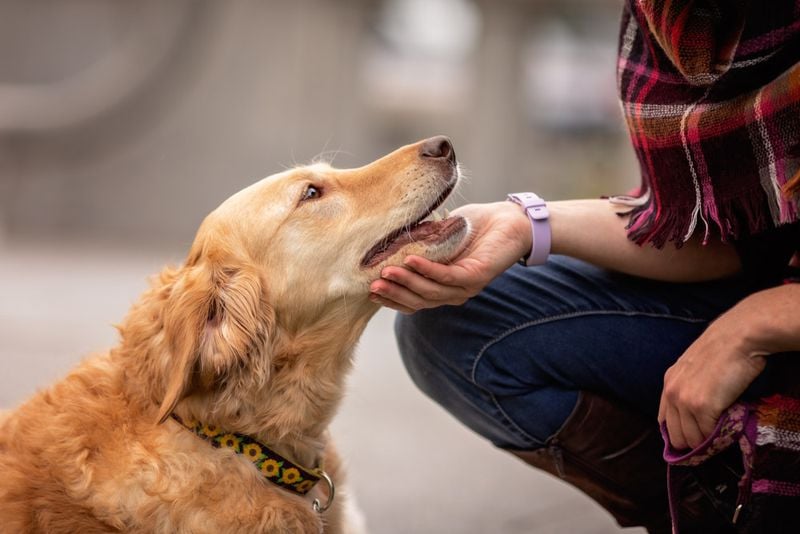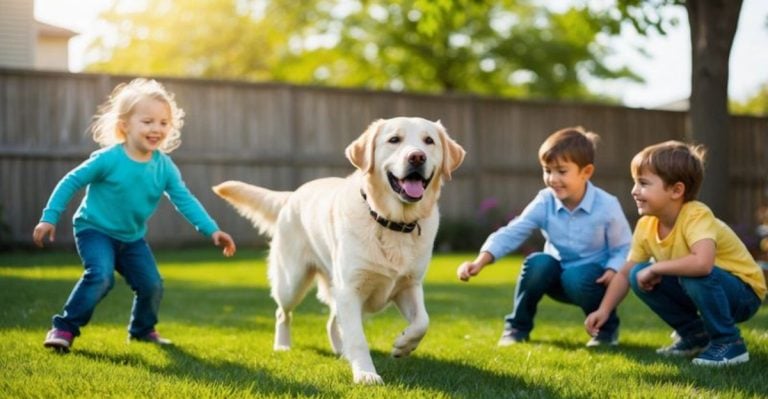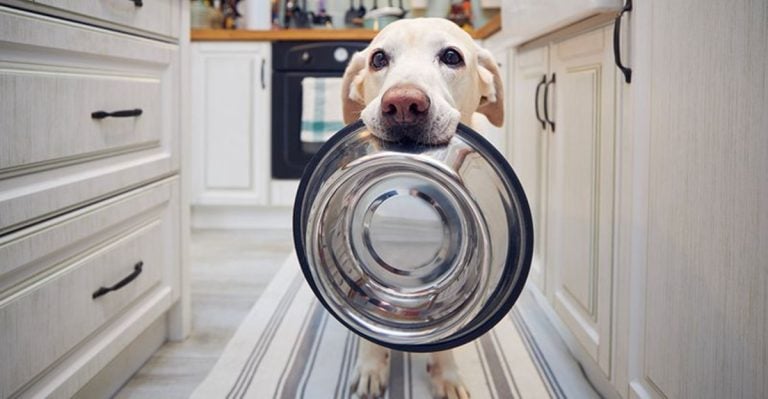Here Are 15 Ways To Understand Your Dog’s Feelings
Dogs may not speak our language, but they’re always communicating. Through body language, vocal cues, and subtle changes in behavior, they’re constantly expressing how they feel—if we know how to listen.
Understanding your dog’s emotions can deepen your bond, prevent misunderstandings, and help you respond to their needs with more empathy.
It’s not just about knowing when they’re happy or sad; it’s about recognizing stress, comfort, fear, excitement, and everything in between.
Whether you’ve lived with dogs for years or just brought home your first pup, learning to decode their emotional world is one of the most valuable skills you can develop as a pet parent.
Here are 15 reliable ways to understand what your dog is really feeling—so you can be the human they know they can trust, no matter what.
1. Watch Their Tail Movement
A wagging tail is often a window into your dog’s soul, but its meanings are multifaceted. The speed, height, and tension of the wag can reveal excitement, fear, or uncertainty. For instance, a high, fast wag often means your dog is thrilled, while a low, stiff wag might suggest caution or anxiety.
Imagine your dog greeting you at the door, tail a blur of happiness. Contrast this with a tentative wag when meeting someone new, signaling curiosity mixed with caution.
Tail language is a complex code, and by observing closely, you can gain insights into your pet’s emotional state, fostering a stronger bond between you and your furry friend.
2. Study Ear Position
Ears are not just for hearing; they’re also expressive indicators of a dog’s mood. Perked ears can signal alertness or interest, as if your dog has just heard something intriguing. However, pinned-back ears often indicate fear or anxiety.
In a bustling park, notice how your dog’s ears twitch and turn, always on the lookout for new sounds. It’s their way of tuning into the world around them.
A sudden flattening of ears in an unfamiliar environment might suggest discomfort. Understanding these signals can help you respond appropriately to your dog’s needs and emotions, ensuring they feel safe and understood.
3. Monitor Eye Contact
The eyes truly are windows to the soul, even for our canine companions. Soft eyes typically indicate comfort and trust, especially when your dog gazes at you lovingly. Conversely, hard stares or seeing the whites of their eyes (known as whale eye) could signal stress or discomfort.
Picture a moment when your dog looks at you with those soft, adoring eyes, a silent testament to their loyalty. Contrast this with a wary glance when they’re unsure of a new situation.
By understanding these visual cues, you can gauge their emotional landscape and respond with empathy, strengthening the bond you share.
4. Pay Attention to Vocalizations
Barks, whines, growls, and howls—each sound carries a different message. Dogs use vocalizations to express a range of emotions, from excitement to distress. A high-pitched bark might mean your dog is playful or seeking attention. In contrast, a low growl could be a warning or a sign of discomfort.
Imagine your dog barking joyfully during playtime, its voice echoing with delight. Now think of a whine when it’s separated from you, a poignant expression of longing.
By tuning into these vocal signals, you can better understand and respond to your dog’s emotional needs, ensuring they feel heard and cared for.
5. Observe Body Posture
A dog’s body language speaks volumes, often louder than words. A tense, stiff posture can indicate fear, aggression, or insecurity, while a relaxed stance suggests comfort. Raised hackles might seem intimidating, but they often signal uncertainty rather than aggression.
Picture your dog during a walk, body relaxed and confident, tail wagging softly. Contrast this with a stiff, crouched posture when confronted with a new and potentially unsettling situation.
By reading these physical cues, you can better navigate your dog’s feelings, offering comfort and assurance as needed. This understanding fosters a harmonious relationship built on trust and empathy.
6. Notice Lip Licking and Yawning
Lip licking and yawning may seem like mundane behaviors, but they often serve as calming signals. These actions can indicate unease or an attempt to de-escalate tension, especially in stressful situations.
Think of your dog yawning in the vet’s office, a subtle plea for calm in an unfamiliar setting. Lip licking might occur when meeting new people or animals, a silent request for a friendly interaction.
By recognizing these signals, you can help create a more comforting environment for your dog, reducing stress and enhancing their sense of security. It’s a gentle way to communicate that they’re understood and loved.
7. Look for Pacing or Restlessness
Restlessness can be a red flag in understanding your dog’s emotional state. Frequent pacing, especially in familiar surroundings, often signals anxiety or a need for more stimulation. It might be your dog’s way of saying, “I need to burn off some energy!”
Imagine your dog pacing near the door, hinting at the need for a bathroom break or a walk. This behavior can also occur when they’re feeling uneasy or overwhelmed by changes in their environment.
By noticing these actions, you can address their needs promptly, ensuring they feel comfortable and content in their space.
8. Track Changes in Appetite
A sudden change in your dog’s eating habits can be a clue to their emotional well-being. If your previously ravenous pup suddenly loses interest in food, it might indicate stress, anxiety, or even illness.
Imagine your dog skipping meals after a big change, like moving houses or the introduction of a new pet. This shift could be their way of processing the adjustment.
By monitoring their appetite, you can detect these emotional cues early and take steps to alleviate their stress. Providing a stable routine and reassuring presence can help them return to their usual, happy selves.
9. Interpret Their Sleep Habits
Your dog’s sleep patterns can reveal a lot about their emotional state. Sleeping too much or too little—or suddenly changing sleep locations—can indicate stress or discomfort.
Imagine your dog curling up in a new spot after a day filled with visitors, seeking solitude to recharge. Alternatively, restless nights might hint at anxiety or physical discomfort.
By keeping an eye on these patterns, you can ensure your dog is getting the rest they need. A supportive environment and clear routine can help ease their mind, allowing them to sleep soundly and wake up refreshed.
10. Watch for Hiding or Avoidance
When a dog seeks solitude, it often means they’re feeling overwhelmed or frightened. Hiding or avoiding contact can be their way of saying, “I need some space.”
Picture your dog retreating to a quiet corner during a noisy family gathering, a silent plea for peace. This behavior might also appear after stressful events or changes, signaling their need to process emotions privately.
Recognizing these tendencies allows you to provide the comfort and space they require, ensuring they feel secure and loved. By respecting their need for solitude, you strengthen the trust and understanding in your relationship.
11. Recognize Play Invitations
Dogs express joy and sociability through play invitations. The classic play bow, accompanied by bouncy movements or goofy grins, is an unmistakable sign of happiness.
Visualize your dog lowering its front half, rear end wiggling in anticipation of fun. This gesture is their way of saying, “Let’s have some fun!” Whether it’s with you or other dogs, play is a vital part of their emotional well-being.
Engaging in play not only strengthens your bond but also provides mental and physical stimulation, keeping your dog happy and healthy. Recognizing these invitations ensures you never miss a chance to share in their joy.
12. Monitor Their Reaction to Touch
Touch can communicate volumes in the language of dogs. While some might lean into a gentle stroke, others may pull away or freeze, each reaction revealing their comfort levels and emotional bonds.
Think about a moment when your dog leans into your touch, a silent affirmation of trust and affection. Alternatively, a withdrawal from contact might indicate discomfort or the need for personal space.
By being mindful of these reactions, you can respect their boundaries and nurture a loving, trusting relationship. This sensitivity to their preferences strengthens the emotional connection you share.
13. Check for Destructive Behavior
Destructive behavior, such as chewing furniture or digging holes, often signals boredom, anxiety, or pent-up energy. Your dog might be expressing frustration or seeking stimulation.
Picture your pup energetically tearing through a toy, a sign they need more mental or physical activity. This behavior can also occur when they’re left alone for extended periods, highlighting a need for companionship.
By addressing these underlying causes, you can redirect their energy into positive outlets. Regular exercise, engaging toys, and quality time together can help curb destructive tendencies and ensure a harmonious environment.
14. Take Note of Greeting Behavior
Greeting behaviors can provide insight into your dog’s emotional state. An enthusiastic welcome with wags and wiggles might indicate joy, while aloofness or reluctance could suggest sadness or confusion.
Imagine coming home to a dog that dances with delight, a clear expression of their affection and excitement. On the flip side, a subdued greeting might signal something amiss, warranting a closer look at their overall well-being.
By paying attention to these interactions, you can better understand their emotional landscape and respond with the care and attention they need to thrive.
15. Follow Their Energy Level
Energy levels in dogs can be telling indicators of their emotional state. A hyperactive dog might be expressing excitement or frustration, while a sluggish one could be feeling down or unwell.
Consider a day’s outing where your dog bounds with energy, chasing after a ball with unbridled enthusiasm. Contrast this with a day when they seem uninterested in play, preferring to lounge around.
By observing these shifts, you can tailor their daily activities to better suit their emotional needs, ensuring they remain balanced and content. This awareness promotes a healthier, happier life for your furry companion.





















